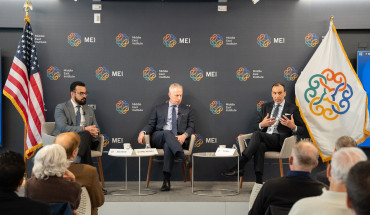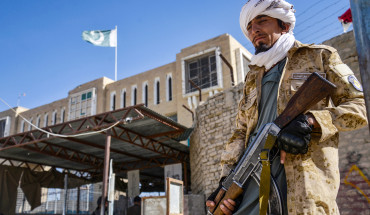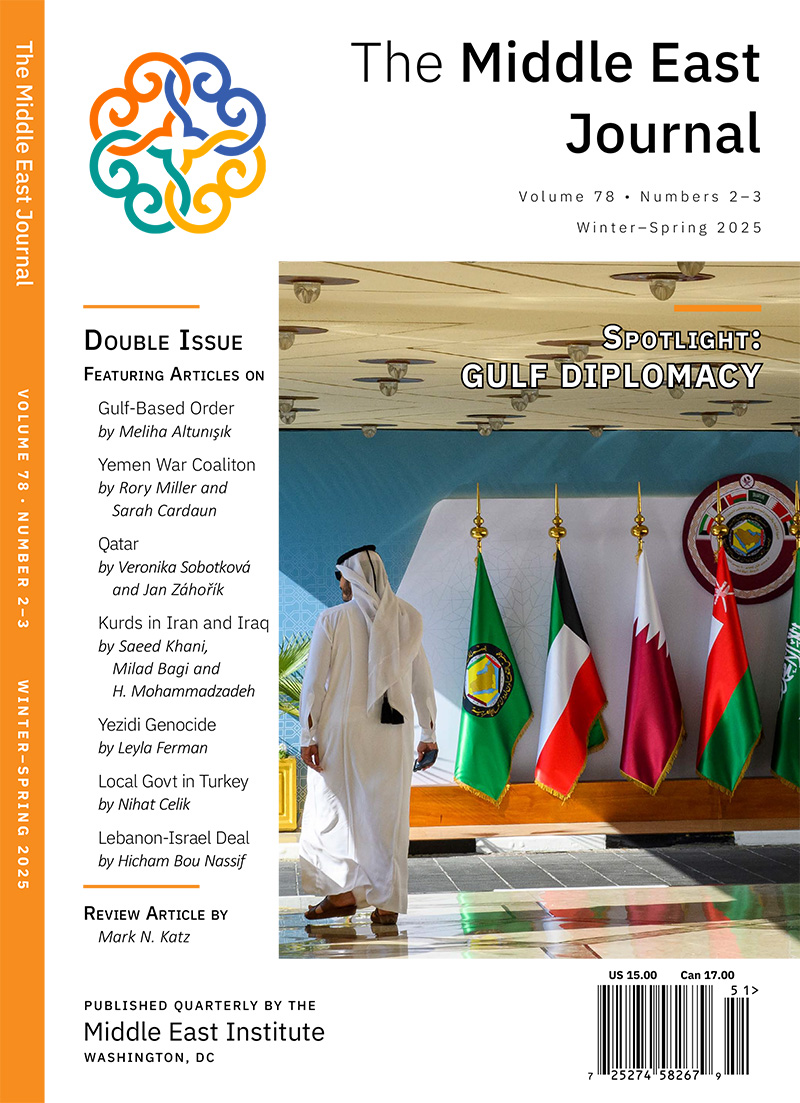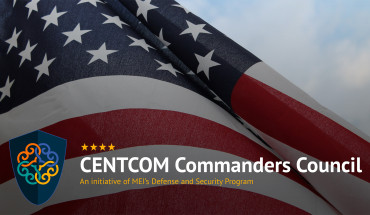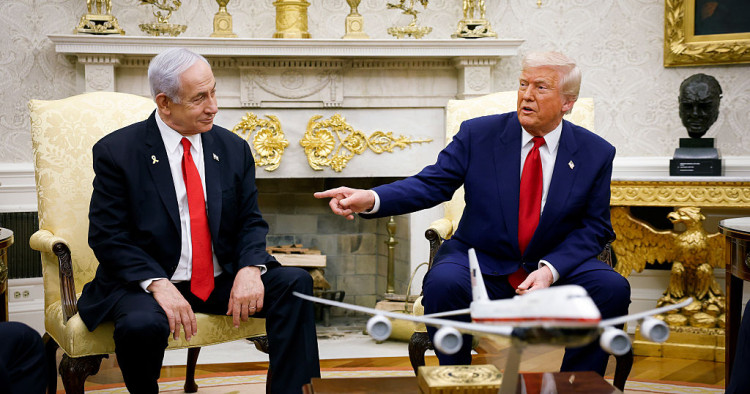US President Donald Trump surprised Israeli Prime Minister Benjamin Netanyahu by publicly announcing “direct” talks between the United States and Iran set to take place later this week.
Netanyahu was visiting the White House on Monday, April 7. His meeting with Trump, the second between the two men in less than three months, came days after the American president unleashed global economic uncertainty by announcing simultaneous, unexpectedly high tariffs on dozens of countries around the world — including a 17% duty on Israel — and kicking off an escalating global trade war.
US national security: Unprecedented economic warfare ends an era of globalization
“Boys will be boys, and we will let their public sparring continue and you guys should all be very grateful that we have the most transparent administration in history,” White House Press Secretary Karoline Leavitt told reporters in downplaying a public spat about the wisdom of the trade war between Trump’s top trade advisor Peter Navarro and billionaire Elon Musk this week.
Trump’s tariffs announcement and the initial slew of reciprocal responses from various targeted countries have led to a huge selloff in global equity markets. That financial tempest continues to escalate, while the two largest economies in the world, China and the United States, have started to slip into a dangerous economic standoff. Though the trade moves have generated some grumbling among a few Congressional Republicans, his economic “sovereigntist” supporters like Navarro and Vice President J.D. Vance are standing firm so far. These battles within the Trump camp are important to watch for two main reasons.
First are the competing views over signs of which direction US global economic policy will take as it plows full steam ahead into uncharted territory. A recent trade war game conducted by the Center for a New American Security found that it is quite difficult for America to hold simultaneous negotiations with different countries. Notably, it took the first Trump administration more than a year to renegotiate modest aspects of the North America Free Trade Agreement (NAFTA) with Mexico and Canada into a new deal — rechristened the USMCA — which in turn has now been thrown out with Trump’s massive new tariffs.
Second, whichever approach to trade policy ultimately wins out inside the administration will have inevitable implications for US foreign policy in ways that are difficult to anticipate as Trump seeks to reshape the international system by shocking the existing global economic order. No region of the world will remain untouched by these economic moves, including the Middle East. Furthermore, the policymaking style and destabilizing rhetoric of Trump 2.0 on tariffs sends important signals about how President Trump himself will approach other foreign policy issues. The gaps between Trump’s top economic officials emphatically saying that these tariffs are not a starting position for negotiations and Trump saying the exact opposite thing a few hours later induce confusion for any US interlocutor — which is seemingly the point of Trump’s uncertainty and unpredictability. Imagine being the foreign minister of a Middle East country visiting Washington to talk with your counterpart and hearing one thing in a meeting with Secretary of State Marco Rubio and then hearing something separate publicly from President Trump.
That uncertainty and mixed messaging coming from top officials in Washington will likely produce greater doubts and skepticism about America’s reliability and lead most US partners to conclude that President Trump himself is the ultimate decider, while essentially no one on his team can be trusted to have articulated the final say in key foreign policy or global economic issues.
US Middle East policy: Iran talks in the spotlight
This chaotic style of policymaking of Trump 2.0 is already hitting the Middle East, as Israeli leader Benjamin Netanyahu witnessed up close and in person when Trump proclaimed that the United States would be meeting directly with Iran to discuss a new nuclear deal. Reportedly, Trump’s Special Envoy Steve Witkoff will lead the discussions in Oman. Yet Iran’s Foreign Minister Abbas Araghchi claimed the talks would be “indirect” and penned a Washington Post opinion piece this week outlining some of Iran’s positions.
The clock is ticking on Iran’s nuclear program, with key deadlines set in the original 2015 nuclear deal coming this year and Iran moving closer to a nuclear weapons capability than ever before. Trump is pursuing diplomacy while concurrently threatening Iran with military strikes. The United States has delivered a second Terminal High Altitude Area Defense (THAAD) system to Israel and pre-positioned more US bombers around the region.
All eyes will be on the upcoming US-Iran talks, and Trump is attempting to renegotiate a nuclear deal that took many years to complete. Other threats and risks are looming, which the White House would be wise to also try to address this time around. In addition to the nuclear issue, Iran’s support for terrorism and its actions undermining regional stability in Yemen, Iraq, Syria, and Lebanon remain major issues of concern for the United States and its Middle East partners, and one big outstanding question is how closely the United States is coordinated with those regional counterparts. As I argued earlier this year in this Middle East Institute report with Alex Vatanka and Patricia Karam, the most effective pathway for dealing with Iran is in close coordination with Middle East partners.
Three things to watch in the coming weeks on US foreign policy and the Middle East
In looking at this uncertain landscape, here are three things to monitor closely as Trump moves forward with his trade war and Middle East policies:
1. How Republicans and Democrats respond to Trump’s growing unpopularity. A wave of domestic opposition to Trump’s economic policies is rising but has not yet coalesced, and Trump continues to double down on his tariffs. Watch carefully for the quite likely backlash driven by public opposition to Trump’s moves and whether a vital center of internationalism begins to emerge on the center-left and center-right in Congress and America.
2. How US partners in the Middle East adjust their policy approaches and relationships with the United States. Trump’s unpredictability is aimed at gaining US leverage, but it could actually lead to some distancing and greater hedging on the part of key regional partners, from Israel to the Gulf states. None will fully break with America, which is still seen as the strategic partner of choice, but a subtle derisking seems almost inevitable.
3. How America’s competitors and adversaries respond. Trump 2.0’s foreign policy has yet to pay any clear dividends — Russia continues to attack Ukraine, and China continues to broaden its web of influence and relationships. These countries and other competitors and adversaries will also adjust to this new environment, and the Middle East will remain a key arena for that competition.
Brian Katulis is a Senior Fellow at MEI.
Photo by Kevin Dietsch/Getty Images
The Middle East Institute (MEI) is an independent, non-partisan, non-for-profit, educational organization. It does not engage in advocacy and its scholars’ opinions are their own. MEI welcomes financial donations, but retains sole editorial control over its work and its publications reflect only the authors’ views. For a listing of MEI donors, please click here.






